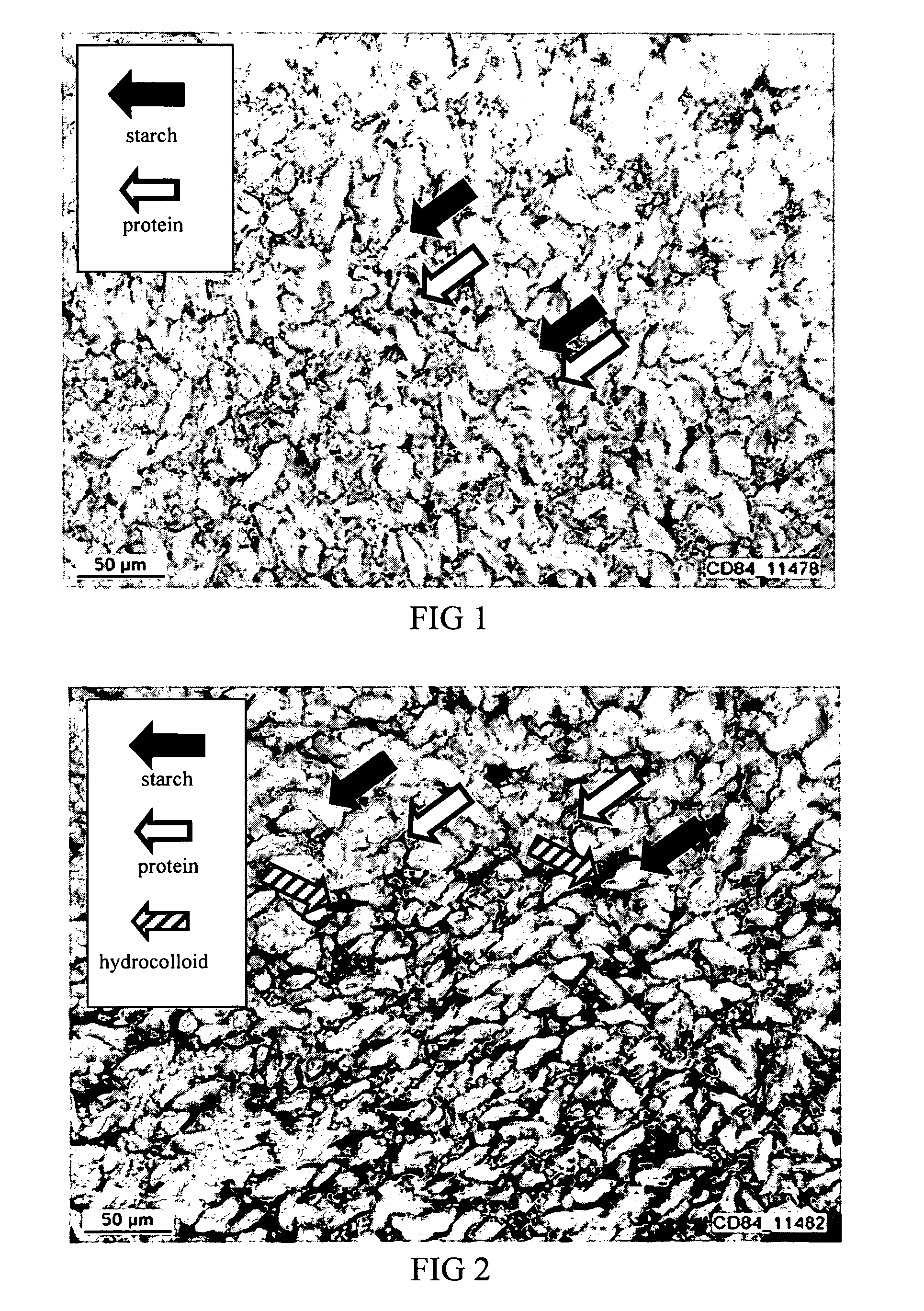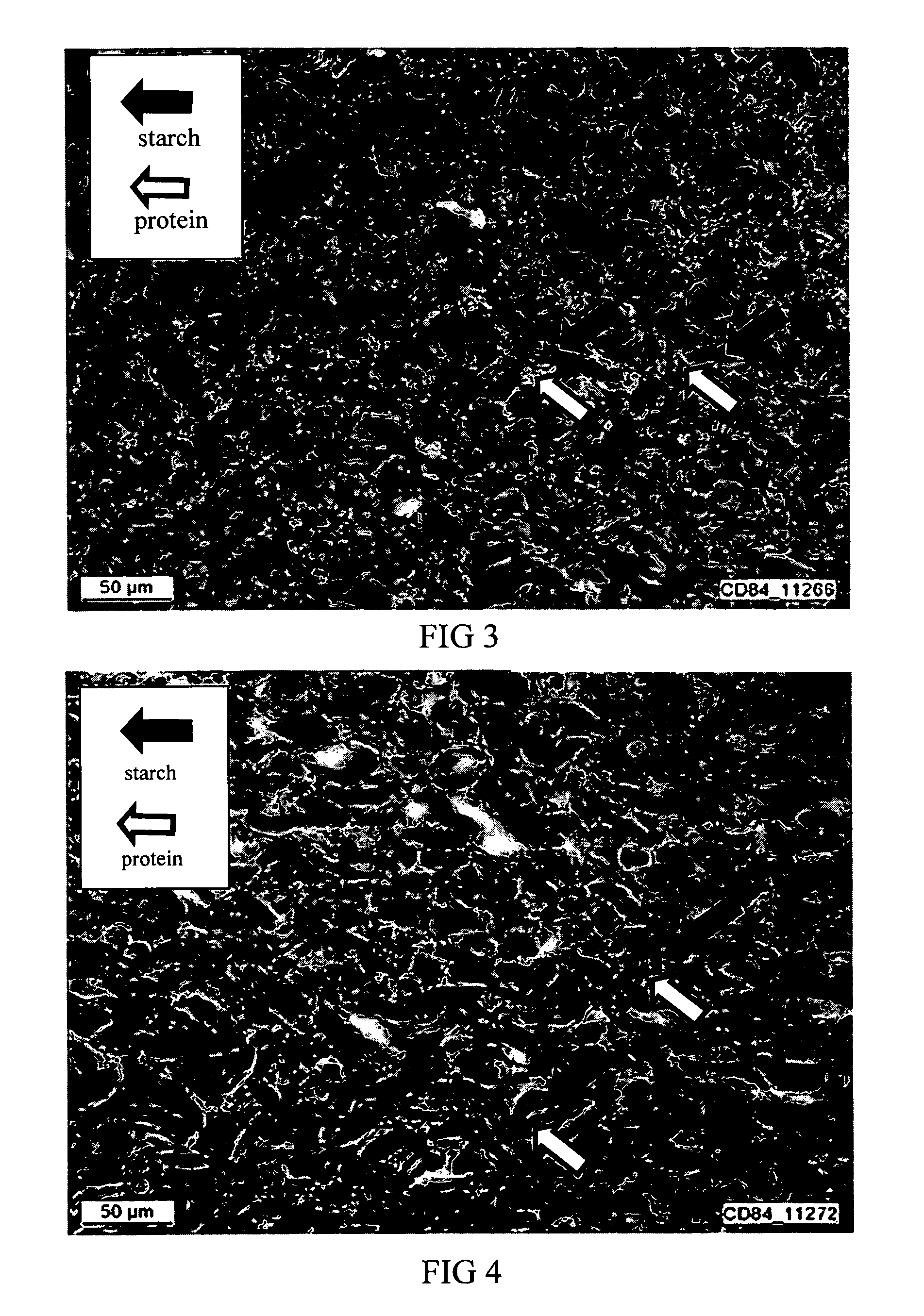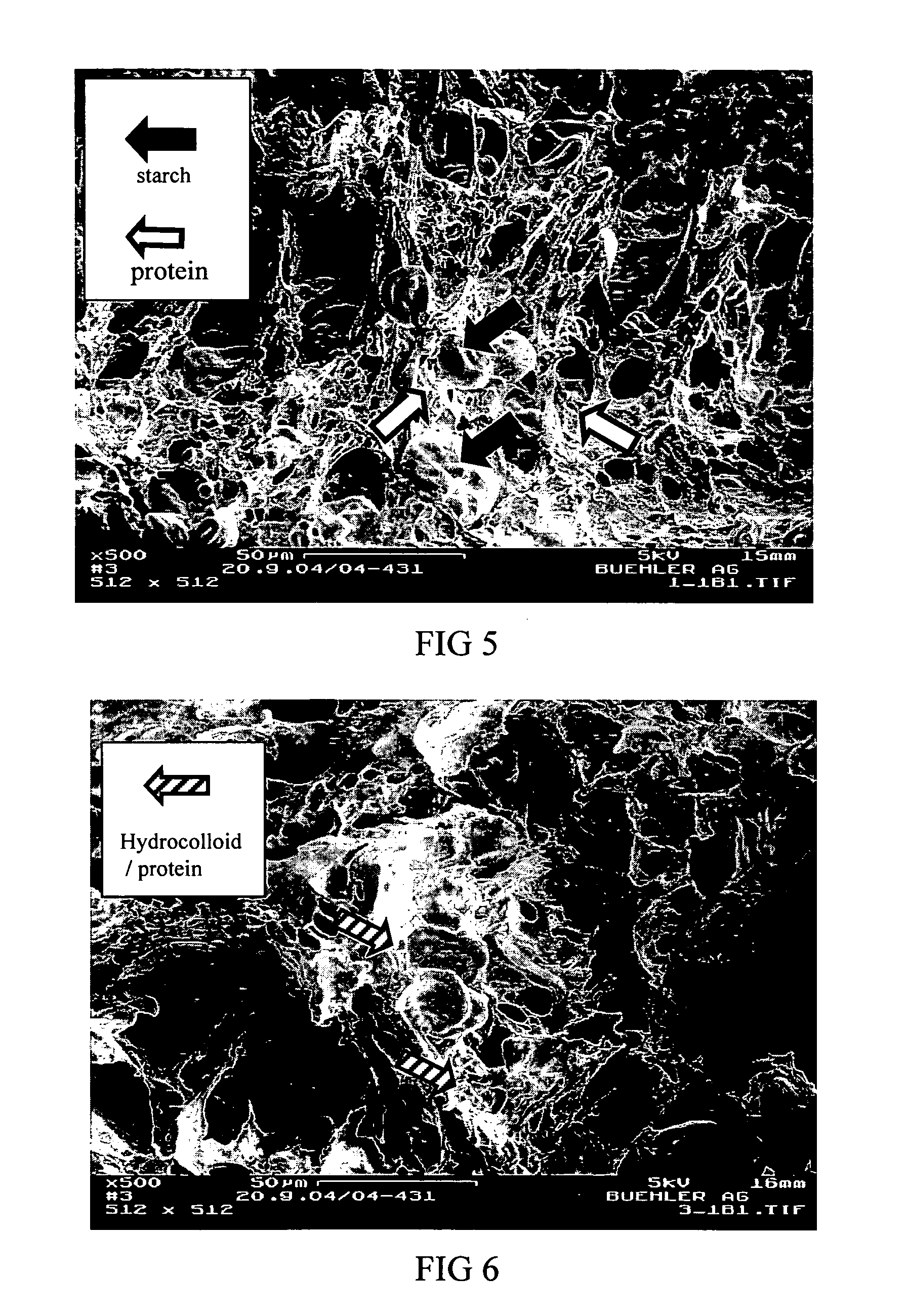Reduced digestible carbohydrate food having reduced blood glucose response
a technology of digestible carbohydrate and food, which is applied in the field of reduced digestible carbohydrate food having reduced blood glucose response, can solve the problems of increasing the risk of death from type, dyslipidemia, diabetes in adults, etc., and achieves the effect of reducing the blood glucose response of a food
- Summary
- Abstract
- Description
- Claims
- Application Information
AI Technical Summary
Benefits of technology
Problems solved by technology
Method used
Image
Examples
example 1
Reduced Digestible Carbohydrate Pasta
[0211]Pasta Dough Formula:[0212]Water—23.0%,[0213]Durum Extra Fancy Patent Flour—64.0%,[0214]Inulin—4.5%,[0215]Vital Wheat Gluten—2.5%,[0216]Guar Gum (prehydrated)—1.5%,[0217]Pea Fiber—4.5%
Procedure: The dry ingredients are mixed for 5.0 minutes in a V powder mixer. The pasta is extruded on a Demaco commercial pasta press. The dry ingredients after mixing are fed into a commercial pasta press, where the water is added by mixing into the dry ingredients at a rate to meet the formula level of water and to produce an extrudable dough. The dough is extruded through a pasta die that would produce a Ziti shape. The moisture content of the extruded pasta is 30%. The wet product is dried to 12% moisture using a pasta dryer. The resulting pasta product is determined to have 12 grams of digestible carbohydrate per 56 gram serving. A conventional pasta typically has 42 grams of digestible carbohydrate per 56 gram serving.
example 2
Reduced Digestible Carbohydrate Pasta
[0218]Reduced digestible carbohydrate pasta was made according to the method described in Example 1, using the ingredients shown below. Table C shows the resulting dried pasta compositions. Semolina is available from Dakota Growers. The weight content of semolina includes about 12% water by weight. Vital Wheat Gluten is available from MGP Ingredients, Inc. Modified Wheat Gluten is available as Arise™ 6000 from MGP Ingredients, Inc. Guar gum is available as TIC Prehydrated NT. Xanthan gum is available as Prehydrated Ticaxan. HM Pectin is high methoxyl pectin, available as Kelco 150 B Rapid Set from CP Kelco. Inulin-A is Inulin Frutafit® CLR, and Inulin-B is Frutafit® HD, both available from Sensus America, LLC.
[0219]
TABLE CWeight % Dried PastaSample No.IngredientABCDEFSemolina fine91.40 91.55 90.95 91.40 91.00 91.00 Vital Wheat 0.900.500.501.101.501.50GlutenModified 0.600.600.600.000.000.00Wheat GlutenXanthan Gum1.001.251.501.101.501.50HM Pectin0....
example 3
Processing of Pasta
[0220]A blend of the non-digestible materials was prepared, consisting by weight of 10.46% vital wheat gluten; 6.98% modified wheat gluten; 11.63% xanthan gum; 3.49% high methoxyl pectin; 3.49% potassium chloride; 29.07% sorbitol; and 34.88% inulin. The materials were placed into a 600-liter high intensity mixer (available from Processall, Incorporated, Cincinnati Ohio) and mixed as a batch for 30 seconds at 430 rpm. The mixer was discharged into an identified super sack. The super sack was unloaded into an AccuRate Mechatron® Gravimetric Feeder, which was adjusted to continuously discharge the mixed blend of non-digestible material at a rate equivalent to 8.6% by weight of the total pasta formula. Durum semonlina flour having a minimum powder temperature of 75° F., was combined with the non-digestible material blend in a paddle mixing conveyor, which was running at 50 rpm with a 2-minute retention time. Optionally, reground pasta is typically added with the durum...
PUM
 Login to View More
Login to View More Abstract
Description
Claims
Application Information
 Login to View More
Login to View More - R&D
- Intellectual Property
- Life Sciences
- Materials
- Tech Scout
- Unparalleled Data Quality
- Higher Quality Content
- 60% Fewer Hallucinations
Browse by: Latest US Patents, China's latest patents, Technical Efficacy Thesaurus, Application Domain, Technology Topic, Popular Technical Reports.
© 2025 PatSnap. All rights reserved.Legal|Privacy policy|Modern Slavery Act Transparency Statement|Sitemap|About US| Contact US: help@patsnap.com



